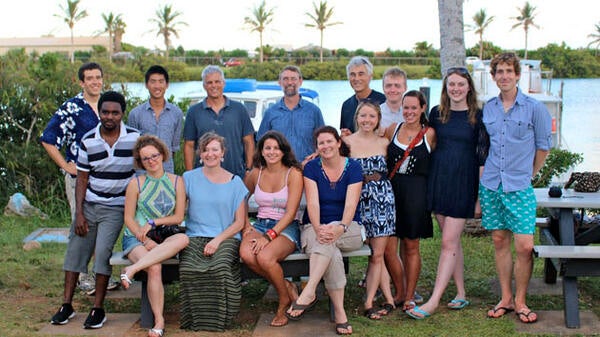Since 1999 undergraduate and graduate students from around the world have traveled to BIOS each summer to participate in the Microbial Oceanography course. This three-week intensive course is co-taught by Dr. Craig Carlson (University of California, Santa Barbara), Dr. Stephen Giovannoni (Oregon State University), Dr. Craig Nelson (University of Hawaii), Rachel Parsons (BIOS), and Dr. John Heidelberg (University of Southern California), which provides students with a truly multidisciplinary learning experience that taps into the combined expertise of top scientists in their respective fields. This course has been made possible over the years with funding from BIOS, the National Science Foundation, Gordon and Betty Moore Foundation and the Agouron Institute.
Students From Around the World Study Coral Reef Ecology at BIOS
August 26, 2013
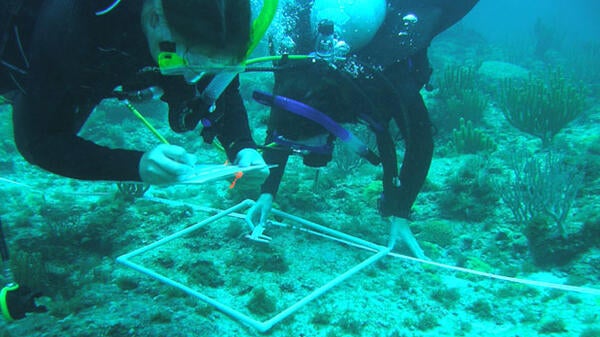
Dr. Eric Hochberg, one of the CRE course instructors, said, “I have two goals with CRE. The first is to teach the students our most current understanding about how coral reef ecosystems work, from the biology to the chemistry to the physics. The second goal is to give the students practical experience studying real coral reef systems. This means strapping on a SCUBA tank, getting in the water, and making scientifically rigorous observations. This is training that cannot be taught in a classroom.”
Funding Renewed for Russian-American Long-Term Census of the Arctic (RUSALCA) Research Program
August 26, 2013
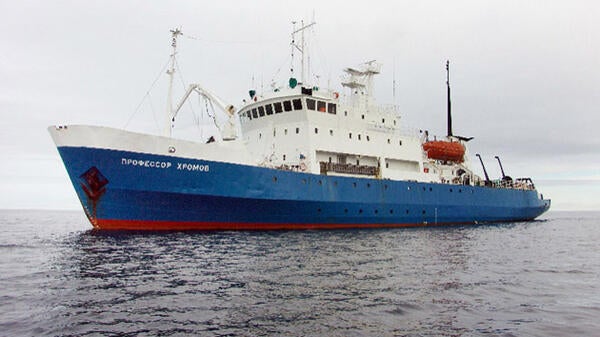
In 2003 the field of Arctic research was significantly advanced by the signing of a Memorandum of Understanding (MOU) for World Ocean and Polar Regions Studies between NOAA and the Russian Academy of Sciences. This groundbreaking agreement paved the way for a new level of collaboration between these two countries in their ongoing efforts to understand the dynamics of the Arctic sea region. The Russian-American Long-term Census of the Arctic (RUSALCA) program was the first research program initiated under this MOU, aimed at studying the ocean carbon cycle and the impacts of ocean acidification on the marine environment in the rapidly changing Arctic Ocean.
National Science Foundation Commits $14 Million Dollars to Ongoing Research at BIOS
August 26, 2013
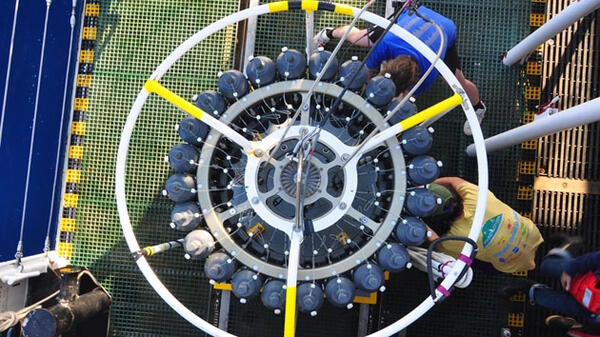
Amid growing concern regarding the current federal funding climate for ocean science research, the National Science Foundation (NSF) just announced continued support for the Bermuda Atlantic Time-series Study (BATS) research program at BIOS. According to Dr. Nicholas Bates, Senior Scientist and Associate Director of Research at BIOS and Principal Investigator of the BATS project, “This represents about $14 million from NSF to BIOS over the next five years: approximately $6 million for research and roughly another $8 million to support science days at sea aboard the R/V Atlantic Explorer.” This announcement comes on the heels of a $4 million award from NSF last year to support Hydrostation S, the world’s longest-running hydrographic time-series, for another five years. Together, these two awards represent a significant commitment by NSF to ocean time-series off Bermuda.
REU Student to Represent BIOS at ASLO Meeting
October 25, 2013

Kelly Speare, a 2012 Research Experiences for Undergraduates (REU) student and 2013 BIOS summer intern, was chosen from a pool of qualified candidates to represent BIOS at the 2014 Ocean Sciences Meeting in Honolulu, HI. This bi-annual meeting is convened by the American Society for Limnology and Oceanography (ASLO), The Oceanography Society (TOS), and the American Geophysical Union (AGU), and brings together scientists from around the world to discuss current topics in marine science, technology, and education.
Novel Use for a Familiar Instrument
October 25, 2013
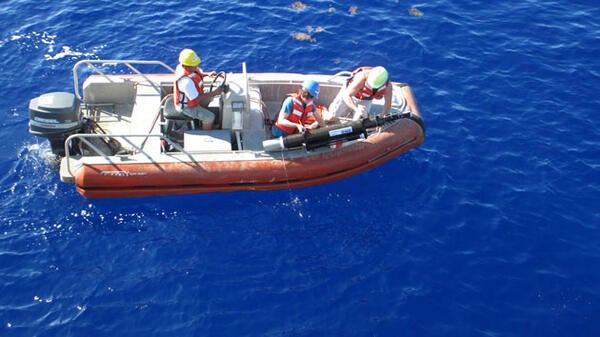
In addition to salt, seawater contains a variety of other dissolved and particulate materials, such as sediment, organic materials, and living cells. Because of their varying sizes and compositions, each of these particles absorbs and reflects light differently. Oceanographers use this to their advantage—by shining a beam of light through the water and measuring how much light is absorbed or scattered, they can get an idea of the types and abundances of particles that are present.
CREOL Debuts New Lab to Study Reef Ecosystem Efficiency
October 25, 2013
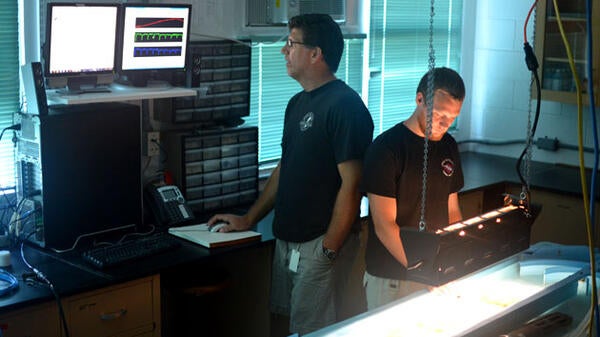
The traditional method for assessing reef health involves fieldwork; that is, going out to the reef in question and taking measurements (e.g., percentages of each coral species, etc.) of the coral, algae, and other bottom types that are present. However, these measurements only present one aspect of health: ecosystem structure. To develop a more complete picture of reef health, scientists also need to understand and be able to assess ecosystem function. In the case of coral reefs, this means quantifying the two main things that reefs do as an ecosystem: primary production (or photosynthesis) and calcification.
BIOS Supports the Bermuda Blue Halo Marine Reserve
October 25, 2013

The Bermuda Government is currently holding a public consultation regarding the creation of a marine reserve to protect the waters surrounding Bermuda. The reserve being considered would encompass a portion of Bermuda’s Exclusive Economic Zone (EEZ), which extends out 200 nautical miles from the island. If designated as such, these waters would be the equivalent of a national park and activities such as offshore fishing and seabed mining would be strictly prohibited. Bermuda has a long history of managing its marine resources and this measure would extend full protection to the area, including a significant portion of the Sargasso Sea’s unique ecosystem. As residents of Bermuda comment on the proposed establishment of a “no take” marine reserve in the waters around Bermuda, BIOS is weighing in on the conversation with a position statement of its own:
The BATS 25th Anniversary Cruise
November 27, 2013
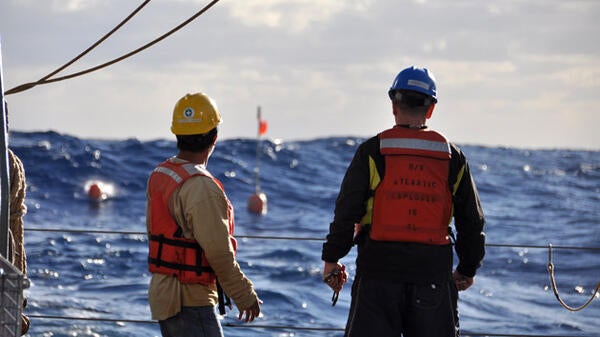
From October 18-25, 2013, a group of scientists and technicians were at sea aboard the R/V Atlantic Explorer on a very special Bermuda Atlantic Time-series Study (BATS) research cruise marking the program’s 25th year. Like many anniversary celebrations, this one involved cake (more on that in a bit!) but—unlike most celebrations—it also involved a variety of oceanographic science.
Small Change, Big Improvement: Modified Method Captures the Ocean’s Most Abundant Organism
July 15, 2015
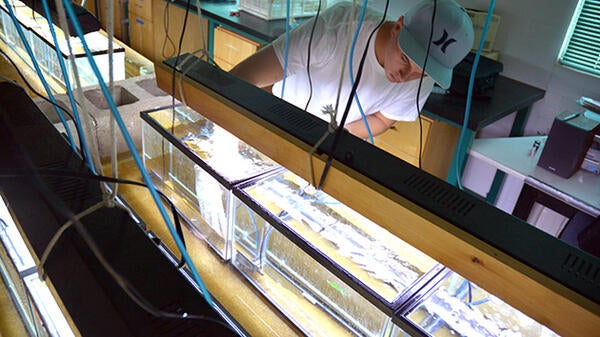
BIOS researchers and their colleagues from Woods Hole Oceanographic Institution have refined a common survey method to better account for a marine bacterium known as SAR11. Since BIOS adjunct scientist Steven Giovannoni discovered SAR11 in 1990, scientists have found the Sargasso Sea bacterium is ubiquitous in the world’s oceans and accounts for roughly one in every three cells at the ocean’s surface. These bacteria have power in numbers: each cell contributes to the marine carbon cycle, and with approximately five million bacterial cells inhabiting every tablespoon of seawater, SAR11 is so abundant that its combined weight would outweigh all the fish in the ocean.
